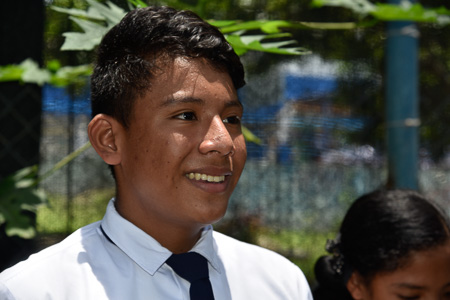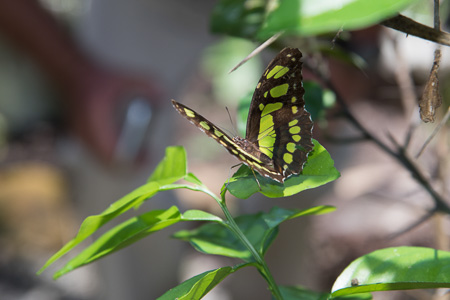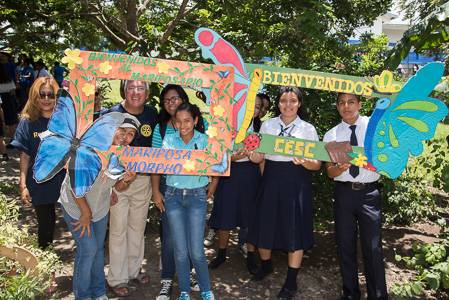

The President of Rotary International, Ian Riseley set a goal for his Rotary year that a tree be planted for every active Rotarian in the world; 1.2 million trees, give or take a few.




Ever willing to accept a challenge, the Rotary Club of Playa Coronado investigated where it could plant a minimum of 21 trees to be most effectively used and where the trees could provide the most benefit. Our club’s Young Generations committee (Ellie Davids, Dulce Kellam and Massiel Oro) recommended that we approach 2 local schools, the first being Centro Educativo, San Carlos, a school founded in 1945 and currently teaching approximately 1,200 students. http://cbsancarlos.webs.com/
Students of the school have already received “Student of the Month” recognition from the Rotary Club of Playa Coronado, so the school is known to the club.
Profesora Sra. Rosario expressed how honored the school was that we had chosen their school for this activity. We advised the school that the Rotarians would arrive at 11:00.


Hence, at approximately 10:30 am on Thursday 25th August 2017, 22 trees all donated by Dulce and Guy Kellam, arrived at the school and the crew set to work. Well we tried, having carried the first few trees into the school by hand, then an eagle eyed Rotarian spotted a wheelbarrow which we used. This was duly filled with the remaining trees and taken into the school where it was grabbed by an eager student who couldn’t be held back. A photo shoot took place in front of the stage and we were rushed down to the garden bohio where we all met as a group at 11:00 am sharp.
22 holes had been pre-drilled and so students, staff and Rotarians each took a tree or 2. Our horticulturalist recommended that each hole be pre-wetted, or at least the bottom of the hole filled with water, however the school’s 'jardinero', gardener overruled him since he said the ground was already wet enough and it was the rainy season so they would be watered by nature that afternoon. Each hole received a little “tierra negra”, black earth, and a tree was placed carefully in the hole. The hole was then filled with soil under the watchful eye of the gardener.




Once all the trees had been bedded and tucked in, we were led to the start of the “Sendero Ecológico”, Ecological Trail. Here students, either individually or as small groups, gave short talks about the specific trees as we passed them. It was further explained that the trees were indigenous or introduced, the uses of the trees; whether fast growing for sustainable timber production, or producing bark, leaves, flowers or fruit with medicinal uses. We were even introduced to insects which were burrowing into the bark of one tree, that would ultimately cause it to fall and die.
Once we completed the trails we returned to the bohio for a little liquid refreshment and we were asked to split into 2 teams to take part in a name matching games, based on what we had learnt of the trail. It was not an outstanding performance because matching Latin names of trees to Spanish meanings is not a Rotarian skill.


The tour continued to the butterfly farm, where we learnt about the different local species of butterflies from the students and then we ventured into the cage to see them zooming around. Outside once again, we were introduced to a couple of local poisonous plants and had our pictures taken in frames, yes, we were framed. We then said our goodbyes and departed the school at 12:30 pm.
The San Carlos school provided an excellent location for our trees and the school’s students gave us in return, an excellent presentation of the local ecology’s flora and fauna. The school did an excellent job of engaging the students and trying to educate us Rotarians (however maybe a little more time is needed with us Rotarians). Thanks to the school’s staff and efforts of the students, our visit was an enjoyable one and impressed us with the quality of the education being provided.